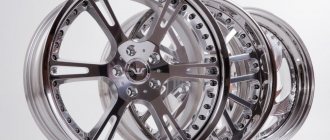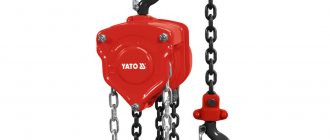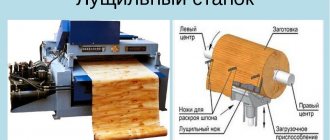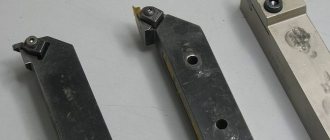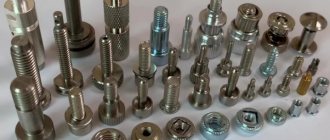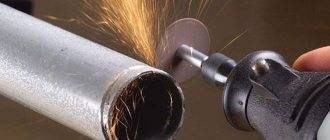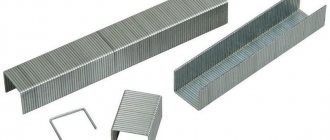It is difficult to imagine a modern service station without such necessary equipment as machine lifts. They help create the necessary conditions not only for inspection and high-quality diagnostics of vehicles, but also for repair work and maintenance. They are often used to solve many other tasks that motorists deal with - performing locksmith work, body repairs, and restoring the chassis. Car lifts are also indispensable for tire services.
These devices greatly simplify engine repairs and electrical maintenance of the vehicle. After all, there is not always enough inspection hole to perform all types of work related to car maintenance. Lifts for cars, the high demand of which there is no doubt, are presented today in a large number of options. Among them are the most popular ones, which many car owners have probably heard about.
Characteristics of car lifts
To effectively perform the tasks assigned to car lifts, they must have certain:
- ascent speed;
- load capacity;
- lifting height;
- clearance;
- design.
Lifting capacity refers to the weight of the vehicle that the lift can lift without the risk of overloading. Equipment used at service stations must have a load capacity of 1.5 to 5 tons.
Another important characteristic is the lifting speed, in which many lifts differ slightly. They usually lift the car in 1-2 minutes. It is logical to expect that electromechanical lifts will be able to lift a car faster. For most types of equipment, the maximum lifting height is limited to two meters.
If we talk about the total height, then it is no more than 4 m. In practice, as a rule, it is not necessary to lift the vehicle to a significant height to perform the necessary work. If we are only talking about cars with a high roof, it may be necessary to raise the vehicle to a height of 4000 to 4200 mm. A separate group of lifts is formed by units used in tire shops, which allow you to lift vehicles to a small height.
The clearance of lifts refers to the minimum height at which the equipment is located when the legs are lowered. For most units, this parameter has a value from 95 to 110 mm. But there are also low-profile mechanisms with a ground clearance of 75-90 mm. Most often, systems of this type are used when lifting vehicles with low clearance or body kit.
Electromechanical lift
The group of electromechanical lifts includes:
- stationary screw four-post lift for trucks and buses
- two post lift for passenger cars
Rice. Electromechanical four-post lift GARO model 448
In a four-post lift, inside the posts 8 there are screws 4, on which the lifting frame 5 is suspended using nuts 3. Each screw is driven by an independent electric motor 1 through a worm gearbox 2.
To hang the car wheels, a lifting trolley 6 with jacks 7 is used. The lift frame is raised and lowered by four synchronous electric motors with reversible magnetic starters. The lift's lifting capacity is 7 tons; the total power of electric motors is 11.2 kW.
Rice. Electromechanical two post lift
Types of construction
The type of lift design determines the principle of its operation. The features of securing the vehicle to the lifting mechanism also depend on the device. Depending on the type of drive, units for lifting cars can be divided into several types:
- Electromechanical.
- Hydraulic.
- Electrohydraulic.
- Pneumohydraulic.
- Pneumatic.
Depending on the design of the supporting elements, it is customary to distinguish rack-mount, plunger lifts and scissor units.
Each version of car lifts for car service has its own design features . They may also differ in scope of application. This is influenced by the type of service work performed and the class of machines that a particular station is servicing.
Recently, electrohydraulic units . The choice in their favor is quite logical, given that they have a large number of advantages over their electromechanical counterparts. For example, in these systems there are no mechanical parts and assemblies that have increased wear. All this has a positive effect on the reliability and durability of the equipment. In addition, such mechanisms have a smoother operation, are more economical, are easy to maintain and allow you to lower vehicles with less effort.
This type of car lifts comes with special supports , which can greatly increase the level of safety of the equipment.
Criterias of choice
Every novice mechanic, like any professional, tries to use the best equipment with maximum efficiency to equip his home workshop. Therefore, when choosing the most suitable mini lift for the garage, you should be guided by the following criteria:
- The strength of the floor can affect the stability of the system. Therefore, for unreliable foundation coverings, it is recommended to give preference to separate devices with minimal weight.
The use of a lift equipped with a special platform for placing the machine increases the stability of the equipment on an unstable concrete base Source skladec.ru
- The overall dimensions of the lifting device must be correlated with the corresponding parameters of the personal garage premises. In some cases, it will be necessary to create special niches or recesses in the floor to accommodate individual fragments of the truck crane.
- An important factor influencing the choice of suitable equipment for a home workshop is the maximum weight of the vehicle being serviced. It is not advisable to purchase an expensive four-post truck crane for motorcycle repairs.
- It is recommended to pay special attention to the distance of the bracket from the floor surface.
Too large a distance can damage the bottom of a car with low clearance and prevent the vehicle from being placed on the lift. Source cgt24.ru
It is possible to purchase a used garage lift. or made independently by folk craftsmen. This offer is especially relevant for motorists experiencing some financial difficulties. Purchasing new equipment from a trusted manufacturer guarantees maximum trouble-free operation.
Post lift
In these units, most of the load falls on the vertical post . To secure the lower part, which serves as a support, anchor bolts are used that are screwed into the concrete base of the floor. On the side of these systems there is a lifting mechanism, which can be of an electromechanical or electrohydraulic type. There is also an additional mount on the side. Sometimes you can find rack-mount units made in a mobile version for easier movement.
Depending on the number of racks, these systems can be classified into three types:
- single-post;
- two-post;
- four-post.
Single rack equipment
The main advantages of these systems are high versatility and mobility . Most often they can be found at small service stations and garage-type services. These mechanisms are available in stationary and mobile versions. The first ones have a load capacity of up to 2 tons. As for mobile models, they have a load capacity of 250 kg. The design features of such units allow the simultaneous use of no more than 4 mobile lifts for passenger cars.
When using these systems, the car is lifted by the wheels or by the sills . Transport rises from one or both sides at once. It all depends on the amount of equipment available. Single-post lifting mechanisms are often used in service stations and car washes. Quite often, tire workshops are equipped with them.
Two post lifts
They are no less popular mechanisms than single-column models. They can be used to perform a variety of tasks - repair, diagnostics and maintenance. The design of these systems does not have a platform, which allows the chassis to be left suspended. Depending on the type of drive, these mechanisms can be divided into electromechanical and electrohydraulic . The former are more convenient to use, while the latter are characterized by an increased level of safety, reliability and durability. Such systems have a load capacity of 8 tons. At service stations, as a rule, five-ton models are used.
Depending on the type of weight distribution, it is customary to distinguish between symmetrical and asymmetrical mechanisms . Based on characteristics such as synchronization method, lifts can be classified into models with a lower or upper type.
Four-post units
The main feature of these products is their high load capacity. Most often they can be found at truck service stations. Systems belonging to this group can be classified depending on the load capacity and platform length . Systems whose dimensions do not exceed 5000 mm are excellent for lifting passenger cars. Their main advantages are simplicity and reliability, affordable price, the ability to service vehicles with a long wheelbase, and use for lifting trucks . The only disadvantages include the not very convenient jumper and large dimensions.
Choosing a garage lift
When choosing a lift, you should study their technical characteristics and their capabilities. The quality of the work performed and the performance of the maintenance point will depend on the correct choice.
For help, you can contact directly the company that supplies this equipment. They can navigate and choose the lift that will meet all the requirements.
Attention: While designing a garage, it is better to design a garage with a lift. Then you can take into account the dimensions of the lift and correctly determine the area of the room.
When making a garage lift with your own hands or purchasing it, we immediately pay attention to:
- A do-it-yourself or purchased lift in the garage must correspond to the dimensions of the room.
- Do-it-yourself car lifts for a garage should also be selected according to the weight of the vehicle.
Attention: According to the first point, you need to add space for free movement. And the second fate is that the load capacity must be selected in the direction of increasing the permissible weight by at least 20%.
Car lifts are divided into several types:
| Single post lifts
| Such lifts are mainly produced in mobile versions and are designed to facilitate the work of mechanics in certain areas of the service point, and have the status of an additional lifting mechanism. The design of such lifts is such that they take up little space, which is very important, since the useful area of the service station is saved. |
| Two post lifts Two post lift | Such lifts have basic technical parameters that you need to pay attention to: the height to the crossbar, the gap between the columns, the lowest height of lowering the legs, the reach of the legs, as well as the safety mode and how they work. Two-post lifts are basic in technical service systems and allow performing all types of plumbing work. As a rule, lifts with a lifting capacity of no more than 4.5 tons are used to maintain cars. |
So:
- In turn, lifts come with upper or lower synchronization, as well as lifts with symmetrical or asymmetrical arm designs that open 180 degrees. Lifts with asymmetrical paws are more versatile and allow you to service any type of vehicle, without forgetting about ease of maintenance.
- They also differ in their locking systems, which can be manual or electric. Mechanical or manual also come in two types: with symmetrical locking of the posts or with separate locking. Both methods have their advantages and disadvantages. It should be separately noted that electromechanical lifts do not have stoppers.
Attention: The most popular are electro-hydraulic lifts, which are safer, more durable and simpler in design, which does not require special maintenance.
At service stations, two-post lifts with a lifting capacity of 3 to 4.5 tons are installed.
Lift drives: pros and cons
A do-it-yourself car lift for a garage must also be selected based on the drive. Their prices are quite different, it all depends on the configuration.
Electromechanical lifts have a lower cost and a simpler design. Caring for such a lift involves caring for the “screw-nut” system, since it is the basis of the lift’s drive system and tends to wear out.
Lift installation diagrams
So:
- Timely inspection and maintenance (lubrication) prolongs the life of the system, and therefore prevents the possibility of failure of the serviced vehicle. It is advisable to use lubricants recommended by the manufacturer for this purpose.
- Lifts with an electromechanical drive do not have special stoppers that ensure the safety of full diagnostics (see Complete diagnostics of a car in the garage) and repair work, which speaks to the convenience of their use: there is no need to constantly check whether the stoppers are installed, which really saves working time.
- These lifts can be equipped with either one or two motors. In a lift with one engine, the force is transmitted to the second column using a belt or chain drive, which require additional maintenance and reduce the reliability of the structure. Over time, such lifts began to be designed with a transmission shaft, which transmits force to the second column. This design is more reliable and does not require special maintenance.
- In twin-motor lifts, the rotation of the motors is synchronized electronically. As a rule, the main attention is paid to the operation of this system, which determines the quality indicators of the operation of these types of lifts. Poor operation of such a system can lead to lifting with distortions, which will entail unpredictable consequences.
- Lifts with electro-hydraulic drive have many positive characteristics that are fundamental for working with vehicle maintenance. They are safe, have high lifting and lowering speeds, significantly save electricity, are quiet and smooth in operation.
- They are equipped with one electric motor and a hydraulic pump that controls the operation of two hydraulic cylinders. The working fluid is transferred to the cylinders using high-pressure hoses. The lifting height is controlled using steel cables. The cables can be located at the bottom (lower synchronization) or at the top, in the crossbar (upper synchronization). Preference can be given to lifts with lower synchronization, as it allows you to service any type of car. As a rule, the cable and hoses of the lift are located below the floor level, which does not interfere with the work and the entry of cars onto the lift, and the absence of a crossbar removes height restrictions.
For service stations, we can offer Bend Pak lifts made in the USA, as well as Chinese lifts for private garages AE&T, NORDRERG and others with hydraulic drive and a perfect safety system.
Such lifts are installed in many service stations and have proven themselves to be safe and reliable devices. Such a lift in a private garage greatly facilitates the work of a private entrepreneur in the garage.
| Four-post lifts Four-post lift | This type of garage lift is used for major car repairs, as well as wheel alignment work.
|
| Scissor lifts Scissor lift | A garage scissor lift is used as a mobile lifting device, which is very often used at wheel alignment stations.
|
| Plunger lifts Plunger lift | This type of garage lift has a very simple design and consists of legs mounted on plungers (hydraulic cylinders), which are usually embedded in the floor, which makes it possible to save working space.
|
- Most often, 2-post lifts are used, which are simple in design, not more expensive and can save work space. Many people, especially recently, use scissor lifts with a traverse for maintenance. And yet, the choice remains with those who decided to open their own business, namely, a service station in their garage.
- It’s a very good idea when you have a garage, but there’s nothing to store in it, although other options for using an empty garage are possible: you can simply rent it out or open a retail outlet if the location of the garage is very promising.
- If you decide to repair cars, you should first of all pay attention to the size of the garage, and as a result, its capabilities in terms of installing a lift. Garages, as a rule, do not have high ceilings, which makes its own adjustments: in such a garage it will be possible to repair only passenger cars, and the lift that can be installed is the most basic and simplest, which would make it possible to lift the car even a little height.
- If desired, you can solve this problem by digging a hole to simplify access to the car. The alternative is to remove the roof and build a garage in height, which is realistic and optimal, since there will be no special costs, but the result will be significant.
- And yet, first you should stock up on information and have a complete understanding of the technical characteristics of lifts: their load capacity, height and lifting speed, its design features and manufacturer.
Load capacity
The installation of the lift in the garage must correspond to the weight of the vehicle. Moreover, the carrying capacity should be greater than the weight of the car itself.
- Mini garage lift for passenger cars whose weight is in the range of 1.2-4.0 tons, you can use a lift with a lifting capacity of 4.0-4.5 tons, which will be enough to service cars, SUVs and small trucks. There are also lifts with a lifting capacity from 4.5 to 20 tons, but they are not suitable for a service station in a garage, as they require more space for their installation.
- The rate of ascent doesn't matter much. At the same time, devices of different types have practically identical indicators in terms of lifting and lowering speeds, which are within one or two minutes.
- The lifting height of electromechanical lifts is within 2 meters, but the maximum height is determined by about 3.5 meters and is determined by the type of lift and its design features.
- When organizing a service station in a garage, you are unlikely to need a lift with a lifting height of more than 3.5 meters. This applies primarily to standard-sized garages, of which we have a large variety.
- You can purchase mobile lifts for the garage that could organize vehicle maintenance with tire fitting work (see How to open a tire fitting shop in a garage) or wheel alignment procedures. It is unlikely that a full-fledged service station could be organized in a garage, where a full range of services could be performed. Most likely, this will be a mini service station with a minimum set of operations that do not require the use of special lifting equipment.
Minimum paw lowering height
A private garage with a lift should also be selected according to the lower lowering point. There should be a flat plane here.
Attention: Each manufacturer produces structures with its own dimensions for the minimum height of lowering the paws, but it cannot be lower than 95 and higher than 110 mm.
So:
- Lift for a private garage with a lower lowering height of the arms The manufacturer produces special lifts for cars with very low ground clearance. Such cars include sports cars and sports versions of low-slung passenger cars, which are contraindicated on our roads. And yet, more and more such cars are appearing on our roads.
- An electromechanical garage lift requires daily inspection and monitoring of the safety nut gap. If a gap appears that is less than the required one, the mechanism should be repaired, with the replacement of worn parts. Lubrication of the main rubbing parts can be done either manually (for cheaper copies) or automatically.
- In daily human activities, various types of vehicles are involved, which require preventive inspections, maintenance and various types of repairs. The range is so large that it requires lifting mechanisms for a very wide range of purposes: from lifting mechanisms for motorcycles to lifting mechanisms for armored vehicles and vehicles with an extended wheelbase.
- Based on this, each type of lift is designed to lift certain types of transport. The manufacturer produces certain types of lifts for passenger cars. There are different types for trucks, especially since not every truck can be driven into a box and undergo repairs or technical inspection.
- There are specially designed lifts for large car depots that have large-capacity cargo transportation facilities. There is no point in driving such cars into special boxes every time for inspection or minor repairs, especially since the presence of such boxes is an extra waste of money and usable space. Such cars are usually repaired in specialized workshops if major repairs are required.
- When choosing a garage lift, you can choose the electro-hydraulic version of the lift, as it is more reliable and convenient to use. The advantage of such a lift is that in the event of a lack of electricity, it can be lowered manually and handed over to the customer. Moreover, this will be done very quickly, unlike other types of lifts, where you will have to turn the mechanism handle for about half an hour.
Scissor car lifts
Mechanisms of this type are used for vehicle maintenance and adjustments. The advantage is the ability to install flush with the floor surface . Thanks to their special design, they take on a compact form when folded.
Many models lift vehicles using a hydraulic drive. The latter provides them with such advantages as complete silence during operation, smooth running, and high durability. There are two types of lifts of this type - stationary and mobile . The latter are used for operational maintenance outside the workshop. These lifts have a lifting capacity of 5 tons . The main disadvantage is the high cost.
Single plunger hydraulic lift
A single-plunger hydraulic lift has a frame 1 mounted on a plunger 2, which extends from a cylinder 3 fixedly installed in the floor of the room; The lifting of the car occurs under the pressure of oil pumped into the cylinder under the plunger. By changing the amount of oil supplied to the cylinder, the lift height can be adjusted.
Rice. Diagrams of plunger-type hydraulic lifts
The specified lift provides the possibility of circular rotation of the car mounted on its frame and is therefore called full-rotary.
Rice. Diagram of a single plunger hydraulic lift
The frame of a single-plunger lift can be tracked or inter-tracked. In the first case, the car rests on the frame with wheels, in the second - with axles, being in a raised state with the wheels hanging out. Track frames are equipped with devices that prevent the vehicle from rolling away.
Plunger equipment
Systems of this type are designed for maintenance and repair of not only passenger cars, but also trucks. They are available in several versions - with one, two and four plungers. There are models with a platform and equipped with paws. In addition, you can find floor-mounted systems. However, systems installed in a special recess in the floor are most often used.
The load-bearing part of the mechanisms is located on the upper end parts. Thanks to this design, lifts provide the most convenient conditions for carrying out work with the possibility of access to the car from either side . The main advantages are a high level of reliability, ease of use, smooth lifting and lowering, low noise level, and a wide range of models. These systems can be used in conjunction with camber adjustment stands. The disadvantages include high cost and difficulties during installation.
Lifts
A car lift is a type of large-sized equipment for tire fitting and service stations, with which you can raise the car to the height necessary for further vehicle diagnostics and repair work. Compared to an inspection pit, the lift is more efficient and easier to install, and it can also be moved, which plays an important role when expanding and remodeling car service premises.
By design, the following types are distinguished:
- Rack type
- can have from 1 to 4 racks as supporting elements - the more support racks, the more functional the equipment will be. Thus, single-post lifts are used for wheel alignment and body work in small workshops: their cost is low, and their dimensions are compact. Two-post lifts are most often used in modern car repair shops, and models with a large number of posts can be used for diagnosing and repairing large vehicles, such as buses. - Scissor technology
- usually equipped with a hydraulic drive. A hydraulic car lift has a moving support, the elements of which visually resemble the structure of scissors. Thus, the support also serves as a movable element at the same time. On top of such equipment there are means of fastening under car axles for gripping and lifting the vehicle. The main advantage of such equipment, in addition to high load capacity and power, is its compactness: it can be installed so that the working surface is flush with the floor surface in the workshop. - Plunger
- their design provides for the presence of lifting-type supporting elements, which have platforms on top for securing vehicles on them. A plunger-type car service lift allows access to the vehicle from any side and at any angle. Installing it requires creating a recess in the floor surface, so installation requires careful selection of the location. Buying plunger-type equipment will be the most thoughtful decision, but it should be remembered that the price of such a lift is significantly higher.
The plunger and scissor designs are considered the most reliable. In addition to high safety, they are also distinguished by smooth operation when lifting and lowering. Preventive maintenance is practically not required when using scissor or plunger type lifting equipment.
Any type of equipment can have a mechanical or automatic, as well as a combined drive. The electro-hydraulic lift is considered the most popular: this type of equipment is easy to maintain, does not require frequent repairs, and can be used to carry out diagnostic and repair work faster and easier. The reliability of the system of such a lift is largely due to the absence of associated rotation elements.
In addition to the design and type of drive, a car service lift may differ in load capacity. There is lifting equipment for trucks and cars: they have different dimensions and costs, and most car services choose the model for cars. A large car service center can afford to install both versions of car lifts.
Most types of structures are presented in the Equinet catalog. On our website you can buy lifting equipment with any type of drive, power parameters and cost. We offer reliable equipment for car service and make one of the best offers in Moscow.
Mobile Column Lift
Owners of service stations and tire shops choose these vehicle lifting systems due to their high degree of versatility and cost-effectiveness when servicing heavy trucks. To use such lifts, you do not need to specially prepare the foundation for their installation. They can be installed in any room .
A significant advantage of the systems is mobility, thanks to which you can save a lot of usable space. The electronic unit used in the design allows synchronization. These systems have lifting capacities from 12 to 80 tons.
Special devices for cars
This category includes systems designed for tire service, body work, and motorcycle maintenance.
Tire fitting systems are made in the form of equipment with a platform, with the help of which you can quickly and with minimal effort replace wheels. Depending on the type of drive, pneumatic, electrohydraulic and electromechanical mechanisms are distinguished. These lifts use a scissor-type design.
Units for body work are very easy to use . With their help, productivity during work increases many times over. These systems have the ability to fully synchronize. Available in two versions - with pneumatic and pneumohydraulic drive.
Selection principles
Car lifts are one of the important mechanisms that every service station should have. All of them today are offered in different versions and have different characteristics that buyers must take into account.
Load capacity is one of the important criteria for choosing a car lift. At the same time, it is necessary to pay attention to the speed and height of lifting, and design. Not only the efficiency and safety of work, but also the ease of use of lifts depends on this.
The latter is especially true for owners of private service stations, who cannot always find space for standard type lifts. Therefore, they need to select these mechanisms with special care, searching among all the variety for solutions that best suit their needs.

